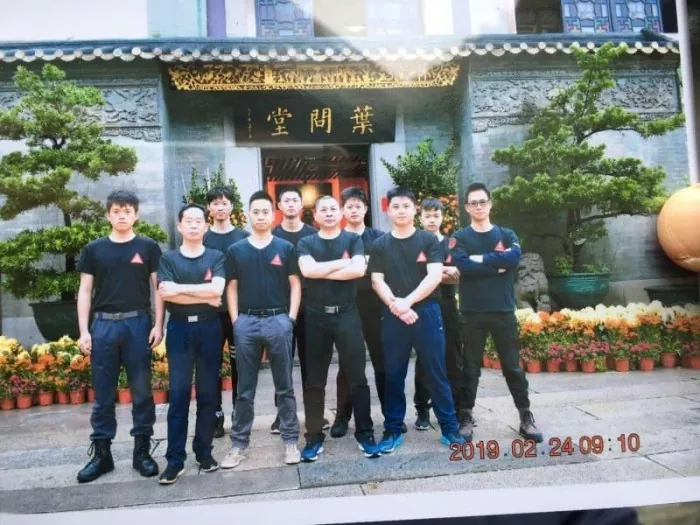Wing Chun Kung Fu: From Southern Shaolin to the Modern Kung Fu Legend
When we think of Kung Fu, we often picture powerful martial artists like Bruce Lee or Ip Man, performing rapid and fluid techniques that seem almost mystical. But behind these legendary figures lies the humble origins of Wing Chun, a martial art that has evolved from a traditional form of self-defense to one of the most effective and widely-practiced styles of Kung Fu in the world today. In this blog, we’ll take a journey through the origins, development, inheritance, and global fame of Wing Chun, exploring how this martial art rose from the hidden corners of Southern Shaolin to become a modern Kung Fu legend.
The Origins of Wing Chun: A Secret Martial Art from Southern Shaolin
Wing Chun Kung Fu traces its roots back to the Southern Shaolin Temple in China during the Qing Dynasty. The story of its origin is as much a legend as it is history, and its early development is linked to a remarkable woman named Ng Mui. According to popular legend, Ng Mui was one of the Five Elders of the Shaolin Temple, who escaped during its destruction by the Qing forces. She sought refuge in the mountains, where she came across a young woman named Yim Wing Chun. The girl was being harassed by a local thug, and after a brief confrontation, Ng Mui saw potential in the young woman.

Ng Mui decided to teach Yim Wing Chun a martial art that would not only help her defend herself but also enable her to defeat stronger opponents using speed, agility, and precision rather than brute strength. This is how Wing Chun was born: a system designed to be simple, practical, and efficient, with a focus on directness, centerline theory, and economy of motion. It was a martial art created for self-defense, especially for smaller or weaker individuals, proving that Kung Fu could be both effective and adaptable to various situations.
The Development and Spread of Wing Chun
After its creation, Wing Chun Kung Fu remained a relatively secretive martial art for several centuries, passed down from master to student in a carefully controlled manner. For many years, the style was taught mainly within small circles, and its principles were not widely known outside of those who practiced it.
The art began to gain recognition outside of Shaolin circles through the efforts of some of its key masters, particularly Leung Jan, who became a well-known practitioner in the late 19th century. Leung Jan’s influence was significant because he was able to refine and promote the system, making it more accessible and practical for the general public. His students, including famous figures like Chan Heung, played a crucial role in spreading Wing Chun across Southern China, and later to Hong Kong.
In the early 20th century, Ip Man, one of the most revered masters of Wing Chun, brought the art into the public eye in a way that had never been done before. His teaching of prominent students, such as Bruce Lee, helped Wing Chun gain widespread recognition in the West and established it as one of the most popular and respected martial arts systems globally.
The Modern Rise of Wing Chun: From Martial Art to Cultural Phenomenon
In recent decades, Wing Chun Kung Fu has continued to grow in popularity worldwide. The rise of Ip Man movies, starring Donnie Yen, brought Wing Chun into the global spotlight, attracting both martial arts enthusiasts and moviegoers alike. These films showcased the effectiveness and beauty of Wing Chun, cementing its place as one of the most respected styles of Kung Fu.
As Wing Chun gained momentum globally, the traditional teachings and techniques were adapted to modern times. While the essence of the art remains rooted in the principles of efficiency, simplicity, and directness, it has evolved to include contemporary training methods that cater to today’s practitioners. This has made Wing Chun accessible to anyone, regardless of age or physical ability, further broadening its appeal.
Today, Wing Chun is taught in schools around the world, and it is no longer confined to a select few or secretive masters. The art has transitioned into a formalized system of training that is studied both for its martial applications and as a means of improving physical fitness, mental discipline, and self-defense skills.

Wing Chun and the Rise of Online Courses
With the advancement of technology, the accessibility of learning Wing Chun has expanded beyond traditional dojos and academies. Online courses have become a crucial part of this evolution, offering students the opportunity to learn Wing Chun Kung Fu from the comfort of their homes. This shift has made it easier than ever for practitioners from all over the world to access Wing Chun online courses, ensuring that the art continues to grow and reach new audiences.
Wing Chun online classes provide a range of instructional videos, step-by-step tutorials, and feedback from experienced instructors, making it possible for students to learn at their own pace. Whether you are interested in mastering the fundamental forms like Siu Nim Tao, Chum Kiu, and Biu Jee, or learning practical self-defense techniques, Wing Chun online training offers a comprehensive approach to martial arts education.
For those with busy schedules or who live in areas where Wing Chun schools are not available, online courses offer a flexible and affordable alternative. This democratization of learning has opened the doors for many individuals to explore Kung Fu and study Wing Chun as a means of self-improvement, fitness, and defense.
Wing Chun’s Legacy and Global Fame
The global fame of Wing Chun Kung Fu is a testament to its enduring legacy. From its humble beginnings in the Southern Shaolin Temple, Wing Chun has traveled the world, leaving an indelible mark on the martial arts community. Today, it is practiced by people of all ages and backgrounds, with schools and online courses available worldwide.
While the world has changed dramatically since Wing Chun was first developed, the core principles of the art remain just as relevant today. The emphasis on centerline theory, efficient movement, and practical self-defense ensures that Wing Chun Kung Fu remains a highly effective martial art, adaptable to modern situations. Whether practiced in a traditional school or through Wing Chun online courses, the essence of the art continues to inspire and empower students around the world.
Conclusion: Wing Chun as a Martial Arts Legacy
From its origins as a hidden martial art in the Southern Shaolin Temple to its rise as a global phenomenon, Wing Chun Kung Fu has proven to be a powerful and enduring system of combat. Its emphasis on efficiency, simplicity, and practical application has made it an ideal martial art for modern-day practitioners.
With the advent of Wing Chun online courses, more people than ever before have access to this powerful martial art. Whether you are a beginner looking to learn Wing Chun Kung Fu or a seasoned practitioner looking to refine your techniques, the opportunity to study this legendary art is now just a click away.




